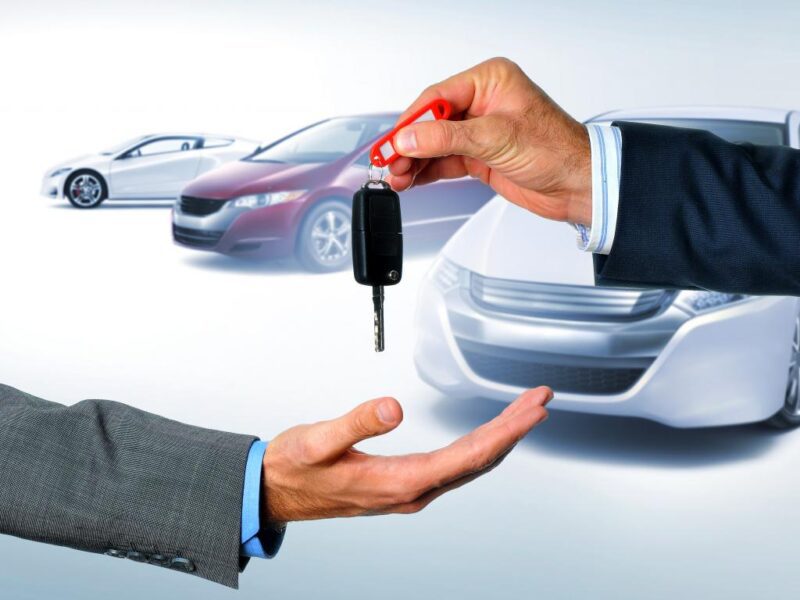Customers often need debt relief because a car loan has gone badly.
Modern society requires the possession and maintenance of an automobile, which sometimes turns into a devastating financial burden. Lenders are quick to finance vehicles because they know that borrowers prioritize automobile transportation over most other financial obligations. Even borrowers with bad credit are fitted into a car financing package at high interest rates to compensate aggressive lenders for the added risk.
Financial difficulties often arise from car financing. The happy car buyer drives his new vehicle almost 100% financed from the property. As the saying goes, the new vehicle loses several thousand dollars in value almost immediately afterwards before it even gets on the highway.
Car transportation costs $4,000.00 to $6,000.00 annually, including car loan payments, liability and collision insurance, repairs and maintenance, and gasoline.
Devastation begins when an unexpected car repair not covered by the warranty or a motor vehicle accident unexpectedly and significantly lowers the value of the vehicle below the outstanding loan balance owed to the bank. Or, perhaps even more harmlessly, in a trade-in for a new vehicle, where eager car sellers and lenders agree to put your old vehicle on sale and throw the remaining balance from your old car loan (for a slightly higher payment) at the back-end of your new car loan, leaving the new car buyer significantly “upside down” when buying a new car.
These situations put the borrower in a predicament where significant portions of income are spent on covering an unsecured auto debt obligation that is not beneficial in meeting modest costs of family life needs.
In certain circumstances, relief from these devastating financial difficulties can be obtained by filing for bankruptcy.
CHAPTER 13 BREAKDOWN OF PROVISIONS
Under Chapter 13 of the United States Bankruptcy Code, debtors are allowed to “stuff” the unsecured portion of their car loans onto the fair market value of the vehicle securing the loan. This requires debtors to repay only the secured portion of the auto loan, but the unsecured balance is treated as a general unsecured creditor that gives the debtor a significant advantage and allows the debtor to pay only a small fraction of the unsecured portion of the car loan debt owed.
For example, let’s say our debtor owns a $10,000.00 car and there is a car loan with a payout balance of $20,000.00. In this scenario, the loan is only partially secured. The car lender is only secured to the extent of the value of the vehicle or $10,000.00. The remaining balance of $10,000.00 for the loan is unsecured. In this situation, the Bankruptcy Code grants the debtor the right to cut off the unsecured part of the car loan and treat that part of the loan as unsecured. So, if General Unsecured Creditors only received a 20% dividend, the auto lender would only receive $2,000.00 for its unsecured portion of the auto loan.
These situations become sticky between debtor and lender, as there are often disagreements about the correct value of the vehicle. Your bankruptcy attorney must negotiate a settlement on the valuation before confirming the debtor’s Chapter 13 plan.
The valuation is based on the provisions of the United States Bankruptcy Code, in particular 11 U.S. Code § 506 – Determination of secured status.
11 USC Paragraph 506(a)(2) expressly provides:
‘Where the debtor is a natural person in a case referred to in Chapters 7 or 13, that value shall be determined in respect of personal property securing an admissible claim on the basis of the replacement value of that property at the time of submission of the application, without deduction of sales or marketing costs. With regard to real estate acquired for personal, family or domestic purposes, the replacement value means the price that a retailer pays for real estate of this type, taking into account thes age and condition of the property at the time of valuation. ” Emphasis
The Cram Down provision under the Bankruptcy Act also provides for a reduction in the interest rate on the car loan. Often, debtors find themselves making enormous auto payments that are used to cover exorbitant interest rates that auto lenders often charge to risky borrowers.
An interesting exception was made under the 2005 amendments to the United States Bankruptcy Code that prohibit cram downs where the car loan was granted within 910 days (2 1/2 years) of the filing date. of bankruptcy under Chapter 13 [see 11 U.S.C §1325(a)(9)]. Debtors must consider the timing of a Chapter 13 filing if they wish to escape the burden of an onriding car loan debt. The insolvency rules require that car loans taken out within 2 1/2 years of filing for bankruptcy must be paid as agreed.
CHAPTER 7 REDEMPTION
Cram Downs are not permitted under Chapter 7 bankruptcy (or “pure bankruptcy”). But Chapter 7 debtors are allowed to “redeem” personal property under 11 U.S.C. §722.
11 U.S.C. §722 provides:
“An individual debtor can… to redeem tangible personal property intended primarily for personal, family or domestic use from a lien to secure an excusable consumer debt if such property is exempt under Section 522 of this Title or has been surrendered under Section 554 of this Title by paying to the holder of such lien the amount of that holder’s admissible secured claim; which is fully secured by this lien at the time of redemption. ” Highlight added
However, repayment can be difficult under Chapter 7 because debtors must pay a lump sum in cash in advance sufficient to pay the secured portion of the car loan, which is measured by the market value of the vehicle at the time the debtor attempts to repay the vehicle. Chapter 7 does not allow restructuring of the loan, but sometimes the car lender accepts payments over time, but usually within a short period of time.
INFERENCE
If your vehicle is worth less than you owe it, bankruptcy options can be beneficial so you can keep your vehicle and move toward better financial health.
Chapter 13 can reduce or “squeeze down” your loan balance and interest rates, lowering your automatic payment, making it affordable. Chapter 13 also allows you to restructure overdue auto payments and spread them over the term of the Chapter 13 plan, so you can afford to make up for the overdue payments within your personal financial means.
Chapter 7 bankruptcy does not involve restructuring of loan repayments, but the repayment provisions under Section 722 allow debtors to purchase their vehicles from bankruptcy at the fair value of the vehicle, while retaining the unsecured portion of the debt under Chapter 7 bankruptcy.
how do you get a car loan from a bank
#Upside #car #loans #Chapter #Breakdown #provisions #Chapter #Repayment
- The winner of the Hottest Firefighter promises: “I’ll stay dedicated to saving lives.” - December 1, 2022
- Smiling influencer caught on camera kicking a dog apologizes for sharing the ‘cruel act.’ - December 1, 2022
- What is full coverage auto insurance in Florida? - November 14, 2022



